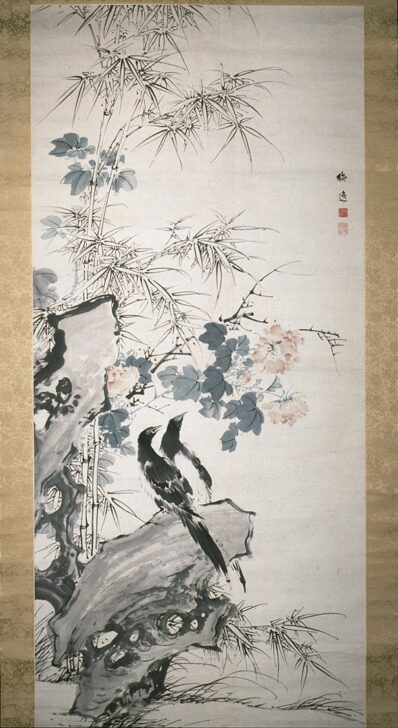Magpies and Hibiscus
Yamamoto Baiitsu

Description
As the son of a Nagoya woodcarver, Yamamoto Baiitsu grew up exposed to art-making. His destiny was forever altered when Kamiya Ten’yû, a wealthy merchant and collector of Chinese painting, took him in as a disciple, along with another Nagoya youth, Nakabayashi Chikutô (see no. 9 in this exhibition). Privileged by direct exposure to fine Yuan and Ming paintings as well as Chinese literati theory, Ten’yû’s pupils would become leading figures in Japanese literati painting of the early to mid-nineteenth century.
Baiitsu is among the most technically accomplished of the Japanese literati painters, perhaps a problem when the orthodox literati stance is to disdain “mere skill” in favor of the amateur’s more honest and naïve revelation of his own character. He is best known for exquisitely rendered bird-and-flower paintings. The broad handling of the forms in this work suggest that it is from an early phase in his career. The combination of “boneless” washes for the hibiscus with ink outline for the bamboo is striking.
Maribeth Graybill, for the exhibition "Japanese Visions of China,"
9/21/02 - 1/3/03
Subject Matter:
Two magpies are perch in a scene of bamboo and hibiscus flowers.
Physical Description:
Two magpies rest among hibiscus flowers. “Boneless” washes for the hibiscus flowers are contrasted with ink outlines of bamboo.
Usage Rights:
If you are interested in using an image for a publication, please visit https://umma.umich.edu/request-image/ for more information and to fill out the online Image Rights and Reproductions Request Form.